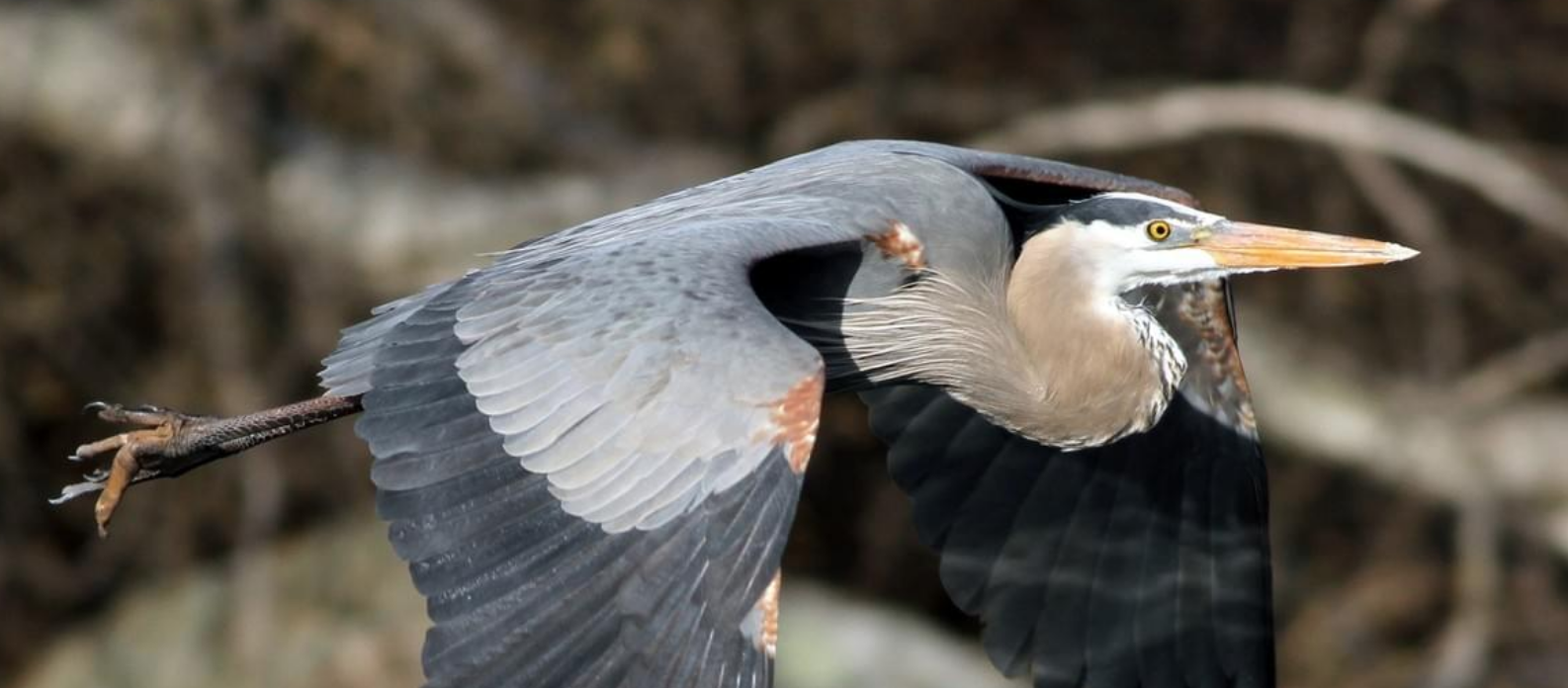Contributed by Bill Hamilton
A few winters ago, a colleague at Penn State asked me why she had been seeing so many Great Blue Herons. Great Blue Herons are charismatic birds of coastal and inland wetlands. When Deborah and I lived on our farm in Northern Allegheny County we had regular visits from a Great Blue Heron every three or four days all through the summer months. The heron would circle down and land on the edge of our pond and spend an hour or so feasting on bluegills and frogs. Our little pond was just one stop on the bird's regular hunting circuit.
Great Blue Herons are the largest of the North American herons reaching heights of four and a half feet and wingspans of over six and a half feet. Their size and distinctive flying posture (they fly with their long necks curled up in an "S" and their legs stretched out behind them) make them readily recognizable as they soar past. They primarily consume fish and frogs from ponds, lakes, streams, and estuaries but very opportunistically will also eat rodents, small birds, snakes, discarded human food, and even goldfish in garden fish ponds.
But, are Great Blue Herons becoming more abundant here in Western Pennsylvania? And, are they spending the winter here more frequently?
The answer is "yes" to both questions.
The State Game Commission in 2009 reported a 32% increase in Great Blue Heron nesting sites in Western Pennsylvania since 2002. These nesting sites (called "heroneries") include a large, four hundred nest site in Mercer County, a 41-nest site in Franklin Park, and two 17-nest sites on Twelve-mile Island and along Deer Creek. If you consider that each nest could house three to seven eggs, you can readily visualize a potential exponential increase in the local numbers of these birds!
So, are more herons overwintering here? The classic Great Blue Heron's yearly cycle involves a southward migration in the mid-fall. They may go to the southern United States (I remember seeing lots of them in the winter in Texas), or they may go down to Central America or even all the way to northern South America. They then return to their northern breeding sites in late February or early March timing their arrival with the thawing of the ice on our ponds, lakes, and rivers. But, if a heron can find open water throughout the winter and is able to hunt for food, or if it is able to utilize some alternative food possibilities throughout the winter, then at least some herons will remain in their northern breeding areas (including Western Pennsylvania) all year round.
Comparing Great Blue Heron winter distribution maps from the late 1970s to more recent maps, it appears that these birds have significantly increased their local, overwintering numbers. Maybe climate change is keeping more surface water sites ice-free for more of the winter, maybe there are just more quality surface water sites available, maybe there have been changes in available foods, or maybe there is just a large enough local Great Blue Heron population that the small percentage of overwintering individuals is becoming more and more noticeable!
It's hard to say which explanation (or which combination of explanations) is accurate, but the presence of these beautiful birds softens the edges of the winter around us. They are a magnificent sign of spring no matter what season we see them.
Image: Cornell Lab of Ornithology
